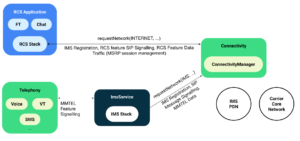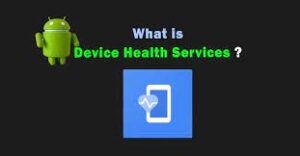A well-designed workforce management system is essential whether your business employs hourly or contingent labor. It streamlines the process of managing your employees and their schedules to maximize productivity, safety, and overall success.
Workforce management software also automates time-tracking processes and makes payroll more reliable. Moreover, it can improve labor budgeting and forecast labor needs so companies can minimize overstaffing, overtime, and other costs.
Ease of Use
Effective workforce management software should be intuitive and easy to use, especially for less tech-savvy employees. This will save you time and effort and help ensure everyone in the company can complete their tasks without problems.
For example, a contact center can use WFM software to generate staffing plans considering agents’ available schedules. This makes it easier to create shifts based on each agent’s availability and personal work preferences, which can improve employee morale and productivity while still meeting service-level goals.
A WFM software solution also helps contact centers analyze staffing data to determine whether changes should be made to their workforces to keep up with changing demand and improve customer service. This data includes scheduling details like availability, productivity hours, and skill set. This information can decide whether to add or decrease headcount to manage the workforce effectively and maximize efficiency.
Another significant benefit of effective workforce management software is that it provides a centralized system for tracking capacity limits. This lets managers control multiple entrances and sites within the same dashboard. This means that users do not have to worry about entering spaces where maximums have already been reached, reducing wait times and freeing up receptionists and security officers to focus on other matters.
In addition to a robust, centralized platform for managing entry and exit, effective workforce management software can automatically prompt employees to complete health questionnaires or other training requirements to ensure they have the necessary skills and credentials to perform their jobs safely. This also enables employers to comply with state and federal labor laws.
Effective workforce management software can reduce employers’ time on administrative and compliance-related processes, allowing them to focus on their business goals. This can result in increased productivity, reduced absenteeism and late arrivals, fewer non-compliance risks, and improved employee morale.
Integrations
Workforce management software is critical to any company’s employee and customer experience. It automates tasks like scheduling and assigning staff, which in turn improves workplace efficiency and leads to better customer satisfaction.
It’s also helpful for keeping track of employee data and ensuring compliance with government regulations, industry rules, and company policies. It also helps managers make informed decisions about their workforce, which can significantly impact company operations.
Many different integrations can be used with effective workforce management software. They can range from simple to complex, and they can be tailored to the needs of any business.
In addition, the system’s robust reporting can help you spot trends and identify areas of improvement.
These systems can also track employee performance, which can be invaluable for employee retention and attracting new talent. They can also help you understand your team’s strengths and weaknesses, which can help you determine where to focus efforts for improved customer satisfaction.
The most effective labor management solutions use advanced analytic tools to give managers the information they need to make smarter decisions about staffing needs and expenses. This translates to increased productivity, reduced costs, and fewer errors.
These systems are often built to integrate with HR systems for tracking salary qualifications and time off. This can streamline the process of monitoring and reducing overtime while ensuring employees have access to the right amount of paid time off.
Another essential feature is the ability to segment your environment according to your policies and needs, making it easier for managers to schedule staff. This can be done by building, floor, or zone to help manage capacity levels and ensure everyone has the proper access to a space.
Finally, a good workforce management software solution will protect employees’ and visitors’ personal and confidential data. This is a critical function, especially in the age of the internet and GDPR compliance.
Reporting
Effective workforce management software provides a variety of reporting capabilities. These features help managers make informed decisions about hiring, training, and scheduling staff. They can also provide valuable information to help employees get the most out of their work.
Employee scheduling: A sound workforce management system helps you create schedules that balance employee availability with production requirements. This can help you reduce staffing costs and improve operational efficiency and productivity by allocating workers with the necessary skills at the right time.
Tracking attendance: A robust workforce management system offers an intuitive way to report hours worked and absences. It can also help you stay compliant with federal and state labor laws. It can also alert you when an employee misses a meeting or breaks company policy, helping avoid costly penalties.
Capacity management: A workforce management system allows you to schedule and book rooms in your building based on availability, ensuring that your employees can complete their duties without interruptions. For example, if an employee tries to book a room already booked by someone else, the system will notify them and prompt them to change their appointment.
Safety and health: A sound workforce management system makes reporting health and safety incidents easy. It can also help you encourage a culture of environmental health and safety at your business.
Error rates: Errors from manual work can cost your business money and cause headaches for your HR team. A WFM system helps your payroll and human resources teams reduce these errors through streamlined processes and audit trails.
Improved employee engagement: A sound workforce management system will also help you gather and analyze real-time employee sentiment to better align your scheduling needs with their preferences. This will help keep your employees happy, productive, and satisfied with their roles.
Increased productivity: A sound workforce management system will allow you to assign tasks, create time logs, and communicate with your employees through chats, notifications, and reports. This can give you a deeper understanding of your team’s productivity and performance, which can help you identify areas for improvement and motivate your employees to do better.
Security
Keeping employee data secure is a crucial aspect of effective workforce management. This includes payroll information, hours worked by employees, and any other employee-related data. A vital security feature built into a workforce management system can help keep this data out of the hands of employees or hackers.
As more employees work from home or on the road, access to business data and documents is more important than ever. This makes maintaining data security even more challenging.
The best WFM software provides various security features that help businesses keep their sensitive information out of the wrong hands. These features include security protocols, passwords, and other safeguards that are designed to protect company assets from breaches.
These security measures are necessary because data breaches can tarnish an organization’s reputation and cost companies millions of dollars in damages. It is also essential to ensure that employees are appropriately trained and understand the importance of data security.
For example, a good workforce management system can prompt employees to watch a safety video or complete health questionnaires before signing in. This can be done in the background while on the go, and it helps ensure that employees follow proper safety procedures.
Another benefit of effective WFM software is that it makes it easier to comply with local, state, and federal employment laws. Different practices vary from city to city, county to county, and state to state, and employers can face penalties and lawsuits if they do not comply with these regulations.
A good workforce management solution can help your company adhere to these laws and avoid fines. It will allow you to easily keep track of all work statements, contracts, and other documents.
Besides helping you comply with local, state, and federal laws, good workforce management software also enables you to improve employee communication. This can help your team feel more comfortable with their job, leading to higher productivity and overall success for your business. Moreover, it can also reduce employee turnover rates and increase customer satisfaction.






More Stories
The Impact of Using Software on the Auto Repair Industry
Best Free Music Production Software in 2020
Movavi Photo Editor Review